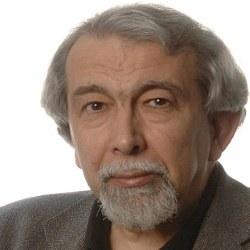Biography
Group Leader
Structural Biology
Sir Thomas Leon Blundell, FRS FRSC FMedSci MAE is a British biochemist, structural biologist, and science administrator. He was a member of the team of Dorothy Hodgkin that solved in 1969 the first structure of a protein hormone, insulin.[citation needed] Blundell has made contributions to the structural biology of polypeptide hormones, growth factors, receptor activation, signal transduction, and DNA double-strand break repair, subjects important in cancer, tuberculosis, and familial diseases.[11] He has developed software for protein modelling and understanding the effects of mutations on protein function, leading to new approaches to structure-guided and Fragment-based lead discovery. In 1999 he co-founded the oncology company Astex Therapeutics, which has moved ten drugs into clinical trials. Blundell has played central roles in restructuring British research councils and, as President of the UK Science Council, in developing professionalism in the practice of science.
The Blundell's Group structural biology research is focused on multiprotein assemblies involving cell surface receptors, such as Met and hepatocyte growth factor/ scatter factor (HGF/SF), and on intracellular signalling systems that mediate cell regulation and repair, for example DNA Double-Strand-Break Repair and chromosome segregation. Many signalling pathways are aberrant in tumours, such as the tumours in Birt-Hogg-Dubé syndrome. We have determined the X-ray structure of a region of the tumour suppressor protein, folliculin, involved in the pathogenesis of kidney cancer subtypes, and are investigating its interactions to understand function and develop anti-cancer therapeutics. We are interested in ways that multiprotein assemblies achieve high signal to noise through cooperative interactions leading to specific but often transient assemblies.
Research on informatics has built on insights from the experimental labs on the recognition of distant homologues and comparative modelling. This has recently been reinforced by the development of relational databases for storage and analysis of protein interactions, focusing on ligand binding. Together these have been developed into pipelines for modelling genomes and understanding genetic variation.
In our academic drug discovery programmes, we have used the structural insights to develop new methods of early lead discovery and optimisation, resulting in the spin-out of Astex Therapeutics, and in house development of early discovery programmes, funded by the Wellcome Trust (difficult targets involving protein-protein interactions) and Gates and EU (neglected diseases, mainly tuberculosis).
Lab members: Michal Blaszczyk, Vitor Mendes, Qian Wu, Bernado Ochoa Montano, Sony Malhotra, Dimitri Chirgadze, Shikang Liang, Sherine Thomas, Liviu Copoiu, Heiyun (Ben) Yang
Publications
1 . Sibanda BL, Chirgadze DY, Blundell TL. (2010) Crystal structure of DNA-PKcs reveals a large open-ring cradle comprised of HEAT repeats. Nature. 463: 118-21.
2. Worth CL, Gong S, Blundell TL. (2009) Structural and functional constraints in the evolution of protein families. Nat Rev Mol Cell Biol. 10: 709-20.
3. Murray CW, Blundell TL. (2010) Structural biology in fragment-based drug design. Curr Opin Struct Biol. 20: 497–507


